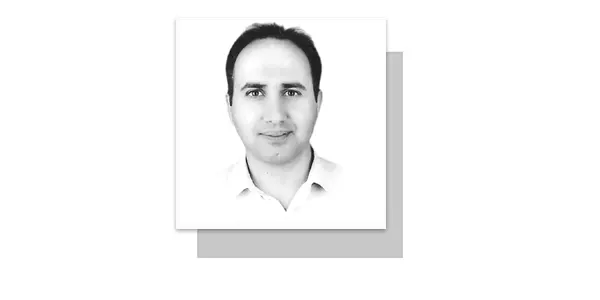EVEN when one tries to accept that a child is now in heaven, the pain refuses to fade. It lingers, like an endless shadow, a constant reminder that some wounds run so deep, they never truly heal. The heart learns to live with it, but the ache remains, forever untouched by time or reason. Ten years have passed since that fateful day, yet it feels as if it were only yesterday. The echoes of the tragedy that unfolded on December 16, 2014, continue to reverberate, marking it as one of the darkest chapters in Pakistan’s history. On that day, more than 158 lives were tragically lost, including 134 innocent children, while countless others bore the scars of the horrific event. A group of armed assailants, driven by a senseless hatred, unleashed their terror upon young minds, storming classroom after classroom during the hours of learning. It took a gruelling eight hours for the forces of order to reclaim the school, but the scars, both physical and emotional, remain forever etched in the collective memory. The event serves as a sombre reminder of the fragility of life, the endurance of grief, and the endless struggle between light and darkness.
Terrorism has claimed countless innocent lives in Pakistan over the years, yet the APS massacre remains a singular and harrowing tragedy in the nation’s modern history. It evoked an overwhelming wave of shock and sorrow, both within the country and beyond its borders, as the world mourned the brutal loss of children, innocently going about their day at school. The magnitude of this national calamity transcended the boundaries of language; no words could fully encompass the depth of grief, and no gesture of solace could heal the profound wounds inflicted. I personally witnessed the funerals of several loved ones lost in the attack, and in the cold embrace of winter, Peshawar became a city draped in an almost unbearable darkness. The sorrow that gripped the city was beyond expression, a collective suffering that still reverberates in the hearts of many, its echoes enduring in the passage of time.
This tragic event highlighted the relentless grip of terrorism on Pakistan, a grip that continues to tighten through the operations of groups like the Tehreek-i -Taliban Pakistan (TTP). Born from the ashes of militancy in the region, the TTP has grown into an aggressive force, fuelled by extremist ideologies and an unwavering desire to destabilize the nation. After Pakistan’s military launched Zarb-e-Azb in 2014, seeking to eliminate terrorist networks, the TTP retaliated with increasing brutality, targeting not just military forces but also innocent civilians. Even with the success of various operations, such as Radd-ul-Fasaad and Zarb-i-Azb, which have crippled terrorist infrastructure and diminished the frequency of attacks, the TTP found refuge across the Afghan border, where it continues to regroup and strike with renewed force. The shadow of the TTP remains ever-present, making the fight against terrorism a never-ending struggle for peace and security in Pakistan. Over 80,000 lives have been lost to bombings and attacks in recent years, many of them in the restive regions of Balochistan, Khyber Pakhtunkhwa, and the border areas. This devastating toll is worsened by the resurgence of terrorism, fuelled by the failure of Afghanistan’s Taliban to prevent the Tehrik-i-Taliban Pakistan (TTP) from operating within its borders. Despite the significant progress made in fortifying the Pak-Afghan border, with over 86% of the fence completed, the threat persists, as Afghanistan has increasingly become a sanctuary for militants. The grim reality is that, even with strengthened borders, extremism continues to flow from across the divide. National Action Plan was introduced in 2014 to tackle terrorism on multiple fronts, from countering terrorist financing and regulating religious seminaries to combating hate speech. However, the implementation of NAP has been slow, with limited progress in key areas like regulating extremist ideologies and tackling terrorism financing. This delay in action underscores the ongoing challenges Pakistan faces in effectively addressing the threat of extremism.
The tragedy of the APS Peshawar remains a painful reminder of the horrors of terrorism. Pakistan’s fight against this menace has expanded beyond the battlefield to hybrid warfare, where social media and digital platforms are weaponized to spread extremist ideologies, misinformation, and propaganda. The battle for hearts and minds is just as critical as the military confrontation. As our armed forces continue their courageous efforts, the nation must not only support them but also demand a swift and efficient judicial system that can bring terrorist financiers and ideologues to justice without delay. NACTA and the judiciary must respond with greater urgency, for the cost of inaction is too high. The people have shown immense resilience, but the scars of years of terror cannot be healed by courage alone. We must address the root causes of extremism, improve border security, and take action to curb the spread of lies and hate through social media. It is not enough to fight terrorism with force; we must fight it with justice, truth, and unity. This war is not over, but in our grief, there must be resolve. Every citizen, every institution, must play their part in ensuring that the forces of terror are eradicated. Only then can we hope for a future free from fear and filled with peace. The time to act is now.










